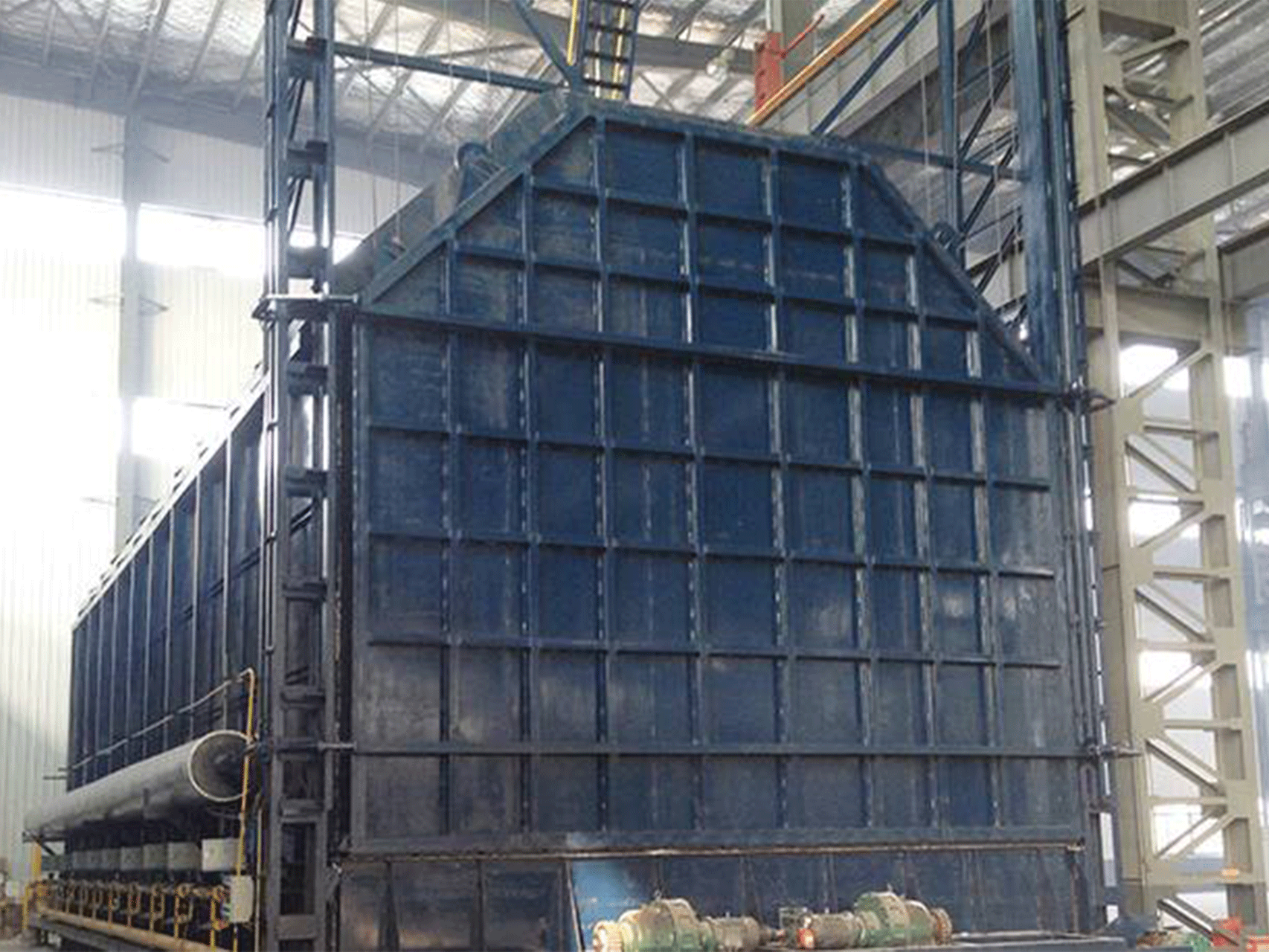Industrial heat treatment furnaces are specialized equipment used in various industries to heat and treat materials to achieve specific physical and chemical properties. Heat treatment involves heating a material to a specific temperature, holding it at that temperature for a set period, and then cooling it at a specific rate.
These furnaces are designed to withstand high temperatures and provide a controlled environment for the heat treatment process. They are commonly used for processes such as annealing, hardening, tempering, and stress relieving of metals, ceramics, and other materials.
There are several types of industrial heat treatment furnaces, including batch furnaces, continuous furnaces, and vacuum furnaces. Each type has its advantages and is suited for specific applications. For example, batch furnaces are ideal for small-scale or low-volume production, while continuous furnaces are designed for high-volume production. Vacuum furnaces are used for specialized applications where the material being treated must be protected from atmospheric contamination.
Industrial Heat Treatment Furnaces: Working Principle
The working principle of industrial heat treatment furnaces involves the application of heat to a material to achieve specific physical and chemical properties. The furnace provides a controlled environment where the temperature, heating rate, holding time, and cooling rate can be precisely controlled to achieve the desired results.
The basic components of an industrial heat treatment furnace include a heating chamber, a temperature control system, a cooling system, and a material handling system. The heating chamber is where the material to be treated is placed, and the temperature control system regulates the temperature inside the chamber. The cooling system is used to control the cooling rate of the material after it has been heated to the desired temperature.
The specific working principle of the furnace depends on the type of furnace being used. For example, in a batch furnace, a batch of materials is placed inside the furnace, and the furnace is heated to the desired temperature. The temperature is then held for a specific time to allow the material to reach a uniform temperature throughout. Finally, the furnace is cooled at a controlled rate to achieve the desired properties of the material.
In a continuous furnace, materials are continuously fed into the furnace, and the furnace operates continuously. The temperature is controlled throughout the furnace to ensure a uniform temperature throughout the materials being treated. The cooling system is also designed to operate continuously to control the cooling rate of the material.
The characteristics
Industrial heat treatment furnaces have several characteristics that make them well-suited for heat treating various materials. Some of the key characteristics include:
- High-Temperature Capability: Industrial heat treatment furnaces are designed to reach high temperatures necessary for the heat treatment process. They can typically achieve temperatures of up to 1,500°C or higher.
- Precise Temperature Control: The furnaces provide precise temperature control to ensure that the material is heated to the desired temperature and held at that temperature for the required duration. This is critical for achieving the desired material properties.
- Uniform Heating: Industrial heat treatment furnaces are designed to provide uniform heating of the material being treated. This ensures that the material is heated evenly, and the resulting properties are consistent throughout the material.
- Controlled Cooling: The cooling system of the furnace is designed to provide controlled cooling of the material after the heating process. This is important to achieve the desired material properties, as the cooling rate can significantly affect the final material properties.
- Safety Features: Industrial heat treatment furnaces have safety features to ensure that the heating process is conducted safely. This includes measures such as temperature sensors, overheat protection, and alarms.
Technical parameters of gas heat treatment furnace
The technical parameters of a gas heat treatment furnace can vary depending on the specific model and manufacturer. However, some common technical parameters of gas heat treatment furnaces include:
- Maximum Temperature: The maximum temperature that the furnace can reach is an important technical parameter. Gas heat treatment furnaces typically have a maximum temperature range of 500°C to 1100°C, depending on the design and size of the furnace.
- Heating Rate: The heating rate of the furnace refers to the rate at which the furnace can raise the temperature of the material being treated. This can range from 10°C to 50°C per minute, depending on the furnace model.
- Chamber Size: The size of the furnace chamber is an important technical parameter, as it determines the maximum size of the material that can be treated in the furnace. Chamber sizes typically range from 50 cm x 50 cm x 50 cm to 200 cm x 200 cm x 200 cm, depending on the furnace model.
- Gas Type: Gas heat treatment furnaces use different types of gas as the heating medium. Common gases used include natural gas, propane, and hydrogen. The gas type used can affect the maximum temperature, heating rate, and efficiency of the furnace.
- Control System: The control system of the furnace is important for precise temperature control and ensuring a uniform heating profile. The control system can include features such as PID controllers, temperature sensors, and data logging capabilities.













